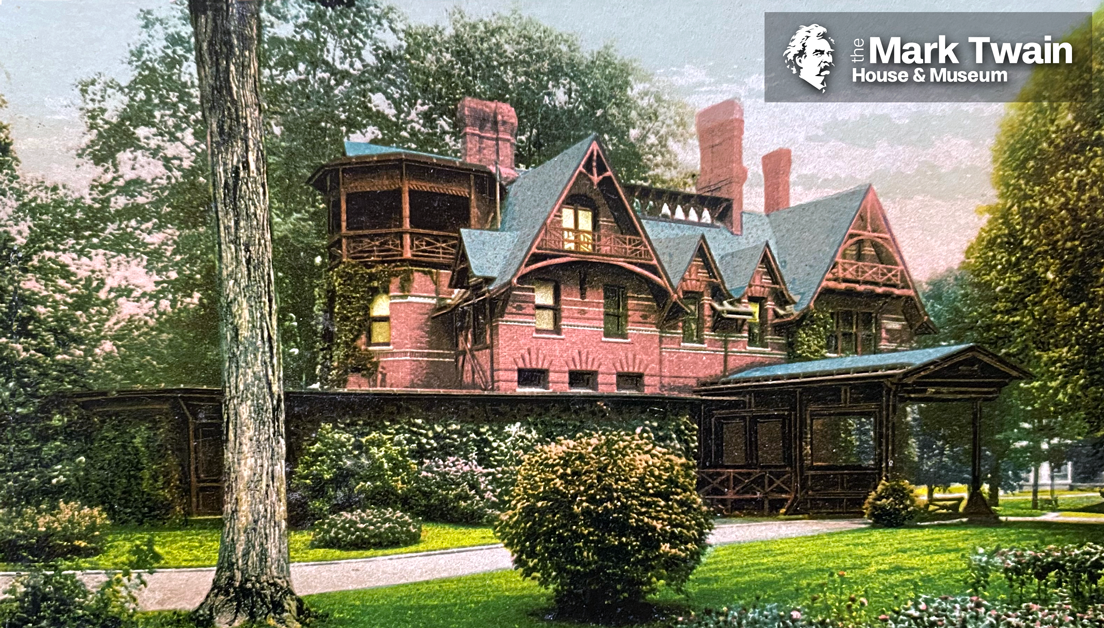
The Mark Twain House & Museum
Hartford, Connecticut
The Mark Twain House Virtual Tour
A CASE STUDY
Learn how The Mark Twain House Virtual Tour helped increase access and generated new interest in its historic property and museum.
Call for more info
Hartford, Connecticut
Learn how The Mark Twain House Virtual Tour helped increase access and generated new interest in its historic property and museum.
Call for more infoIn 1873 Sam Clemens — known to most of the world as Mark Twain — and his wife Olivia turned to New York architect, Edward Tuckerman Potter, to design their Hartford, Connecticut home. Nearly a century and a half later, the 11‚500-square-foot house is still a destination for everyone from groups of school children learning about their local author to people with a more macabre bent, excited to take a ghost tour at Halloween.
Now, with the help of Capture Visual Marketing (CVM) and Matterport 3D technology, The Mark Twain House and Museum is bringing the beloved author’s Gilded Age home to the global masses. Anyone with an internet connection can virtually explore the three-story home through an immersive experience — stopping along the curated tour to engage with media tags that reveal information about everything from the paintings on the wall to the furniture in the rooms.
The Mark Twain House virtual tour quickly reached 100,000 views. With analytics powered by Capture LLC, the Twain team can track viewer locations and use that data to refine marketing strategies. The museum also linked its physical donation box to a donation page within the virtual tour. This allows remote visitors to support the museum while extending its accessibility to 24/7, year-round.
In 2017, Capture LLC’s founder, Tony Healy, used Matterport’s 3D technology to help high-end real estate clients sell homes. He soon realized historic homes could also benefit. When he introduced the idea to the Twain House team, they hesitated. They feared free virtual tours might reduce in-person visits. Instead, the opposite happened. Displaying the 3D tour prominently on the website led to increased ticket sales.
Beyond boosting sales and expanding reach, 3D virtual tours offer more advantages for historic properties. Many historic homes lack modern accessibility features, making visits difficult for some guests. A virtual tour bridges this gap, providing an inclusive experience for all.
“For preservation reasons, we cannot make the second and third floor accessible to all visitors. The tour has acted as an excellent substitute for those folks, as a guide will ‘walk’ visitors through the upper floors to offer them a good substitute for being there,” says
Pieter N. Roos, Executive Director.
Virtual tours have been an important part of increasing access to historic properties for years, however, the pandemic highlighted just how important this access is. “The tour is so good that the New York Times featured it early on in the pandemic as a way to see museums when everything was shut down,” says Roos. “Then they featured it a second time almost a year later. In fact, we had more people look at the virtual tour than normally go through the house in a good year.”Roos says over 130,000 people accessed the virtual tour just during the pandemic.
“As the pandemic starts to fade, we are pleased to still have the virtual tour into the future — as a tool for both marketing and interpretation of our museum. We always look for, and usually find, new ways to use it.”
— Pieter N. Roos, Executive Director, The Mark Twain House & Museum
Document Inventory – A 3D tour acts as a detailed inventory of historic and valuable items. It provides essential documentation for insurance and aids in repairs by preserving high-resolution imagery of every part of the property.
Get Precise Measurements – Matterport 3D files do more than capture high-quality images. They offer precise measurements, especially in empty rooms. These files can be converted into CAD for architects, used by movers for logistics, or transformed into floor plans.
Host Virtual Field Trips – Virtual tours go beyond self-guided experiences. A live guide can lead virtual field trips, allowing students or remote visitors to explore the property from a classroom or home.
Reduce Visitor Anxiety – Many visitors experience stress when navigating unfamiliar places. A virtual tour helps reduce anxiety by providing a preview of the space, easing concerns about accessibility and layout before an in-person visit.
Creating a 3D virtual tour for a historic property is a precise but efficient process. Capture LLC sets up a Matterport camera on a tripod, which rotates and records 360-degree views in 60-degree segments. Moving through the property in small increments, the camera stitches the images together to form a seamless 3D model.
The Capture LLC team monitors the scan in real-time to ensure complete coverage. They also tag mirrors and windows to prevent visual distortions like infinite reflections.
Post-processing varies based on property size, taking anywhere from a few hours to a full day. The final tour includes an embeddable URL with an interactive index and color-coded media tags.
Capture LLC has partnered with Austria-based ViewAR to enhance the virtual tour with augmented reality, creating a more immersive in-person experience.
Additionally, the launch of Matterport-to-CAD now enables LOD 200-level scans, providing accurate 3D data for architects, designers, and restoration professionals.
[Learn more about Capture LLC’s work with historic and cultural properties here]